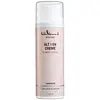What's inside
What's inside
 Key Ingredients
Key Ingredients

 Benefits
Benefits

 Concerns
Concerns

 Ingredients Side-by-side
Ingredients Side-by-side

Water
Skin ConditioningDicaprylyl Carbonate
EmollientCetearyl Isononanoate
EmollientGlycerin
HumectantPentylene Glycol
Skin ConditioningCetearyl Alcohol
EmollientSteareth-20
CleansingSafflower Oil/Palm Oil Aminopropanediol Esters
Skin ConditioningLaminaria Digitata Extract
Skin ProtectingOpuntia Ficus-Indica Stem Extract
Skin ConditioningArabidopsis Thaliana Extract
AntioxidantMarrubium Vulgare Meristem Cell Culture
Skin ProtectingLeontopodium Alpinum Meristem Cell Culture
Skin ConditioningRetinyl Palmitate
Skin ConditioningTocopheryl Acetate
AntioxidantTocopherol
AntioxidantMicrococcus Lysate
Skin ConditioningCaprylyl Glycol
EmollientHexylene Glycol
EmulsifyingLactose
HumectantGalactoarabinan
Lecithin
EmollientSchizophyllan
HumectantBeta-Glucan
Skin Conditioning1,2-Hexanediol
Skin ConditioningCarbomer
Emulsion StabilisingCellulose
AbsorbentMaltodextrin
AbsorbentC14-22 Alcohols
Emulsion StabilisingCetearyl Glucoside
EmulsifyingC12-20 Alkyl Glucoside
EmulsifyingHydroxypropyl Methylcellulose
Emulsion StabilisingDisodium EDTA
Sodium Hydroxide
BufferingPhenoxyethanol
PreservativeEthylhexylglycerin
Skin ConditioningSodium Benzoate
MaskingParfum
MaskingCI 77007
Cosmetic ColorantLimonene
PerfumingWater, Dicaprylyl Carbonate, Cetearyl Isononanoate, Glycerin, Pentylene Glycol, Cetearyl Alcohol, Steareth-20, Safflower Oil/Palm Oil Aminopropanediol Esters, Laminaria Digitata Extract, Opuntia Ficus-Indica Stem Extract, Arabidopsis Thaliana Extract, Marrubium Vulgare Meristem Cell Culture, Leontopodium Alpinum Meristem Cell Culture, Retinyl Palmitate, Tocopheryl Acetate, Tocopherol, Micrococcus Lysate, Caprylyl Glycol, Hexylene Glycol, Lactose, Galactoarabinan, Lecithin, Schizophyllan, Beta-Glucan, 1,2-Hexanediol, Carbomer, Cellulose, Maltodextrin, C14-22 Alcohols, Cetearyl Glucoside, C12-20 Alkyl Glucoside, Hydroxypropyl Methylcellulose, Disodium EDTA, Sodium Hydroxide, Phenoxyethanol, Ethylhexylglycerin, Sodium Benzoate, Parfum, CI 77007, Limonene
Water
Skin ConditioningEthylhexyl Stearate
EmollientGlycerin
HumectantButyrospermum Parkii Butter
Skin ConditioningDimethicone
EmollientCaprylic/Capric Triglyceride
MaskingCetyl Alcohol
EmollientGlyceryl Stearate
EmollientNiacinamide
SmoothingPhragmites Communis Extract
Skin ConditioningPoria Cocos Extract
Skin ConditioningPEG-75 Stearate
Dimethiconol
EmollientCeteth-20
CleansingSteareth-20
CleansingAcrylates/Vinyl Isodecanoate Crosspolymer
Emulsion StabilisingXanthan Gum
EmulsifyingEthylhexylglycerin
Skin ConditioningPhenoxyethanol
PreservativeBenzoic Acid
MaskingDehydroacetic Acid
PreservativeSodium Hydroxide
BufferingWater, Ethylhexyl Stearate, Glycerin, Butyrospermum Parkii Butter, Dimethicone, Caprylic/Capric Triglyceride, Cetyl Alcohol, Glyceryl Stearate, Niacinamide, Phragmites Communis Extract, Poria Cocos Extract, PEG-75 Stearate, Dimethiconol, Ceteth-20, Steareth-20, Acrylates/Vinyl Isodecanoate Crosspolymer, Xanthan Gum, Ethylhexylglycerin, Phenoxyethanol, Benzoic Acid, Dehydroacetic Acid, Sodium Hydroxide
 Reviews
Reviews

Ingredients Explained
These ingredients are found in both products.
Ingredients higher up in an ingredient list are typically present in a larger amount.
Ethylhexylglycerin (we can't pronounce this either) is commonly used as a preservative and skin softener. It is derived from glyceryl.
You might see Ethylhexylglycerin often paired with other preservatives such as phenoxyethanol. Ethylhexylglycerin has been found to increase the effectiveness of these other preservatives.
Glycerin is already naturally found in your skin. It helps moisturize and protect your skin.
A study from 2016 found glycerin to be more effective as a humectant than AHAs and hyaluronic acid.
As a humectant, it helps the skin stay hydrated by pulling moisture to your skin. The low molecular weight of glycerin allows it to pull moisture into the deeper layers of your skin.
Hydrated skin improves your skin barrier; Your skin barrier helps protect against irritants and bacteria.
Glycerin has also been found to have antimicrobial and antiviral properties. Due to these properties, glycerin is often used in wound and burn treatments.
In cosmetics, glycerin is usually derived from plants such as soybean or palm. However, it can also be sourced from animals, such as tallow or animal fat.
This ingredient is organic, colorless, odorless, and non-toxic.
Glycerin is the name for this ingredient in American English. British English uses Glycerol/Glycerine.
Learn more about GlycerinPhenoxyethanol is a preservative that has germicide, antimicrobial, and aromatic properties. Studies show that phenoxyethanol can prevent microbial growth. By itself, it has a scent that is similar to that of a rose.
It's often used in formulations along with Caprylyl Glycol to preserve the shelf life of products.
Sodium Hydroxide is also known as lye or caustic soda. It is used to adjust the pH of products; many ingredients require a specific pH to be effective.
In small amounts, sodium hydroxide is considered safe to use. However, large amounts may cause chemical burns due to its high alkaline.
Your skin has a natural pH and acid mantle. This acid mantle helps prevent harmful bacteria from breaking through. The acid mantle also helps keep your skin hydrated.
"Alkaline" refers to a high pH level. A low pH level would be considered acidic.
Learn more about Sodium HydroxideSteareth-20 is a waxy compound used to emulsify ingredients. It is created from stearyl alcohol.
It possesses surfactant properties. This means it reduces surface tension and helps oils, dirt, and pollutants to be washed away.
The 20 stands for the number of ethylene oxide used to create this ingredient.
Learn more about Steareth-20Water. It's the most common cosmetic ingredient of all. You'll usually see it at the top of ingredient lists, meaning that it makes up the largest part of the product.
So why is it so popular? Water most often acts as a solvent - this means that it helps dissolve other ingredients into the formulation.
You'll also recognize water as that liquid we all need to stay alive. If you see this, drink a glass of water. Stay hydrated!
Learn more about Water